Stirling Moss: More than Mr Motor Racing
Stirling Moss was a unique bridge across motor sport history, but his values never changed. Andrew Frankel shares his personal recollections of the man behind the moniker
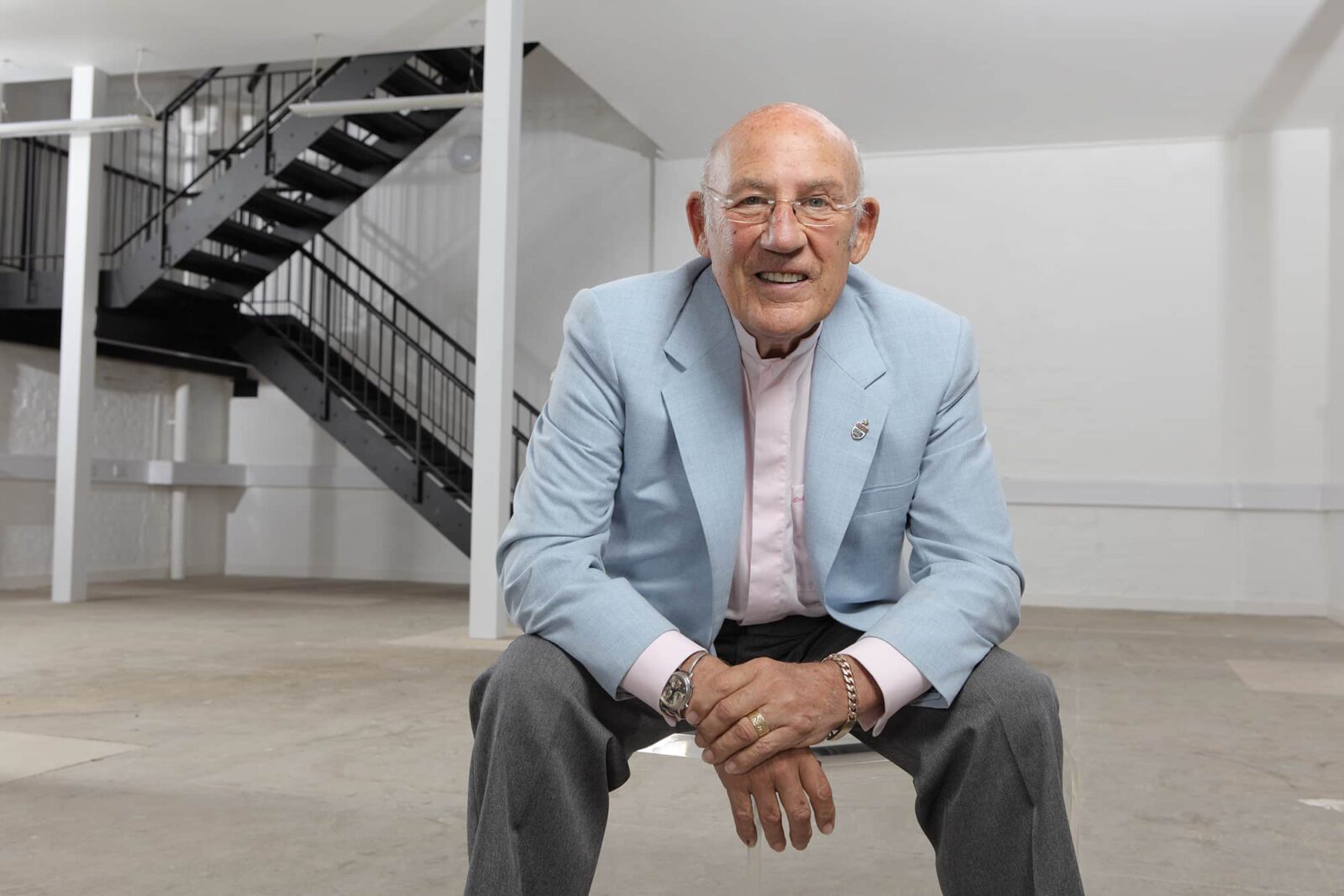
Moss pictured at Motor Sport’s office ahead of his 80th birthday in 2009, when he was guest editor of the October issue to mark the occasion
Normally a few pages such as these, if properly written by someone who knew their subject, would be enough to provide some meaningful insight into a life, even one as great as that lived by Sir Stirling Moss. It would be no biography for sure, but at least provide a skeleton image of the person, which the reader could then flesh and clothe with more extensive material at his or her leisure. But called upon to do as much for Stirling, I fear I may fall woefully short.
I knew him well since my days editing this title over 20 years ago, but when I try to think of words to describe my friend, contradictions flood my brain. For Stirling could be thoughtless at times and quite astonishingly kind at others. He could be one person in a crowd of adoring well-wishers, and another entirely across the dining room table. He was a complete professional, probably the first in his sport, yet a large part of him never really grew up. He had a highly commercial brain, at times perhaps a little too aware of the value of the Stirling Moss brand, yet at others was almost embarrassingly generous with his time.
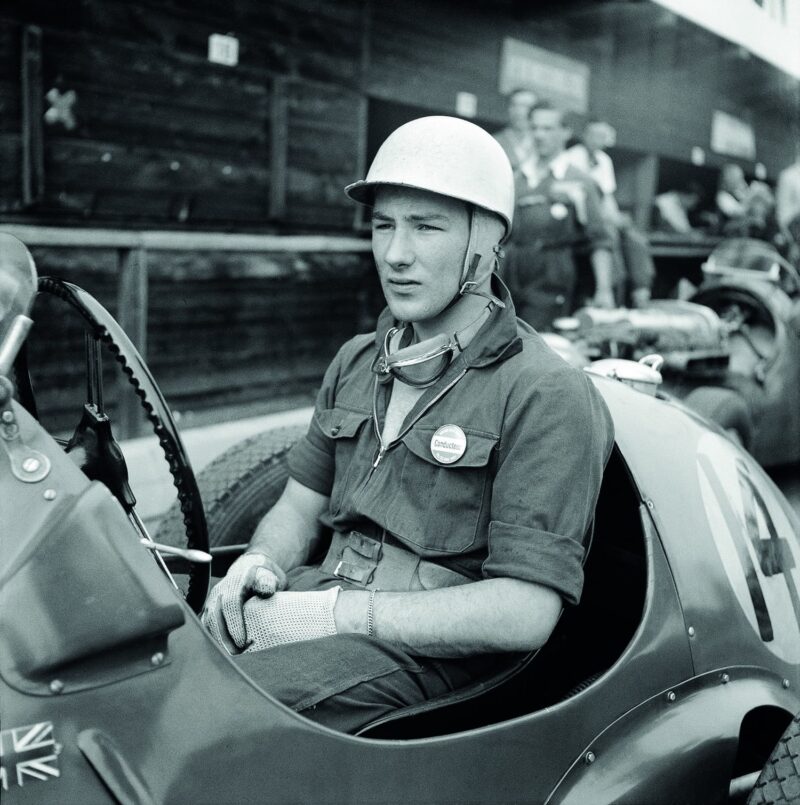
Stirling Moss gets ready for practice in his HWM-Alta at the 1951 Swiss GP in Bern
Klemantaski Collection/Getty Images
He could be tactless and spectacularly politically incorrect, yet despite his privileged upbringing, his public school education, the circles in which he came to move and the wealth he was to acquire, he was no snob. Famously he never won the Formula 1 World Championship, nor did he win Le Mans, but the most remarkable thing he failed to acquire in his years at the top of his game was an ego.
Me? If I may be permitted one moment of self-indulgence, I recall most vividly the Saturday night at the 2014 Monaco Historic. He was there as a guest of a bank and on duty throughout save for this one evening off, which he and Lady Susie chose to spend with me and my brother in the Café de Paris. And I can’t remember what we ate or drank, or even what we said, but I’ll remember for the rest of my days laughter of a kind that had the tears rolling down our faces. Stirling could also be a spectacularly funny man too, and I don’t think enough people appreciate that.
Personal characteristics aside, Moss in later life provided a unique bridge to the past. This is a man who met Nuvolari, who raced Caracciola and Hans Stuck senior. And while his memory of specific events was pretty terrible, he remembered people and not just his heroes. At Motor Sport in the days before digitisation, often some uncaptioned picture of a group of racing drivers would be dredged up from the archives of whom we might be able to name two thirds; so we’d fax it across to Shepherd Street and await the reply as we might have from our picture researcher. I don’t think he ever failed us.
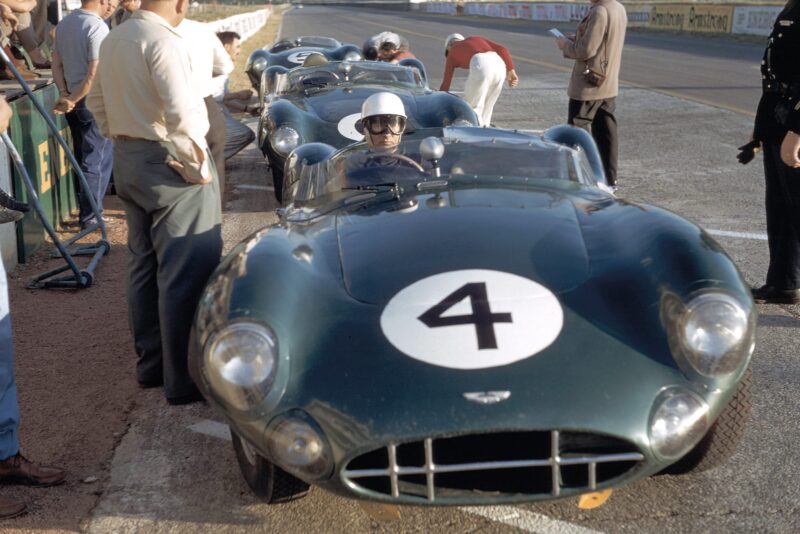
Moss gambled on more than just Le Mans in 1959, a call that took Aston to the WSC title
Time without number I’d find myself wondering about the person behind the professional, so I’d ring him up and say something like ‘what was Ascari really like?’ and Stirling would tell me, and even today I am a little awed at having that kind of access. It worked the other way too: I once did a piece that sought to shed some light on Innes Ireland the driver, not Innes the hell-raiser we thought we all knew, so after a fairly caustic appraisal from John Surtees, I rang Stirling.
“Up until that time, he was the best driver Lotus had ever employed,” said the Boy Wonder, “but I was pretty serious about motor racing and Jimmy was more serious still. I think it’s why Chapman saw that the future lay with him and not Innes.” So amid this considered, insightful comment lay something of Moss himself – “I was pretty serious about motor racing…” And so he was, unlike any British driver before him.
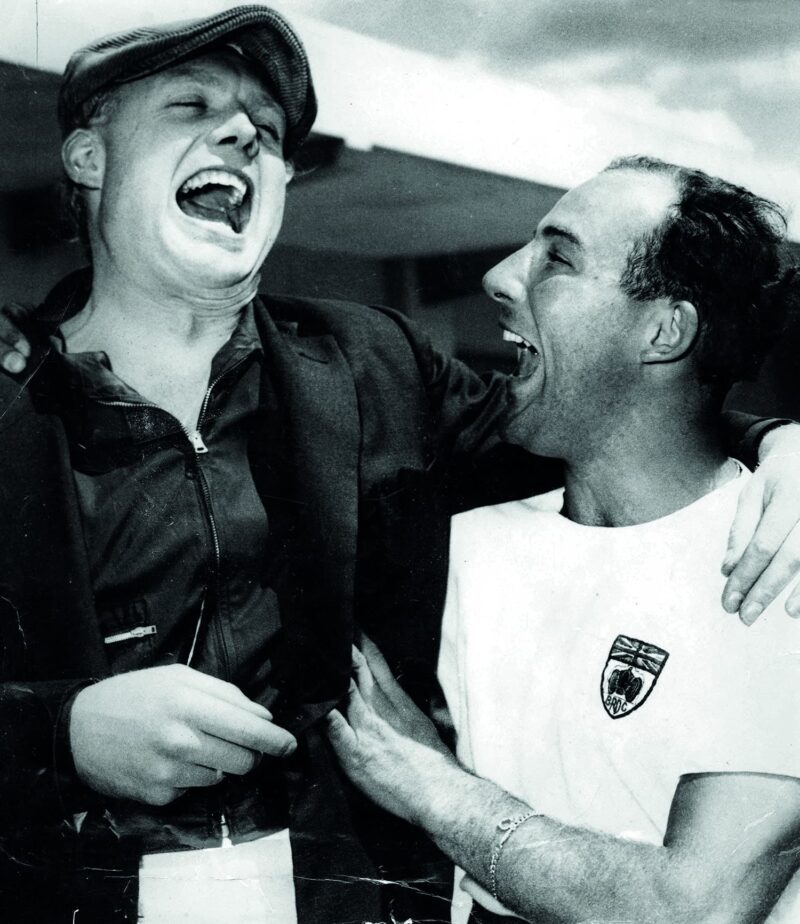
A famous act: Moss and Mike Hawthorn, who won the ’58 F1 title after Moss pleaded his case against exclusion in Portugal
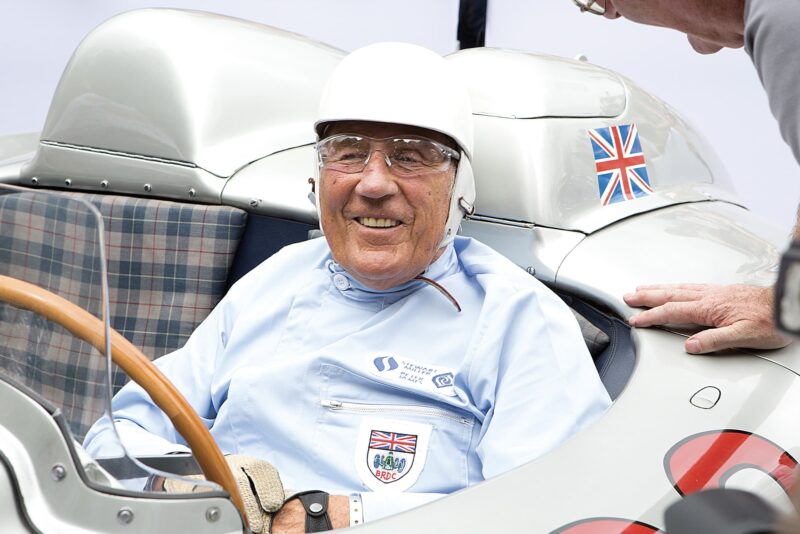
Moss is reunited with his 1955 Mille Miglia-winning Mercedes 300SLR at Goodwood in 2015
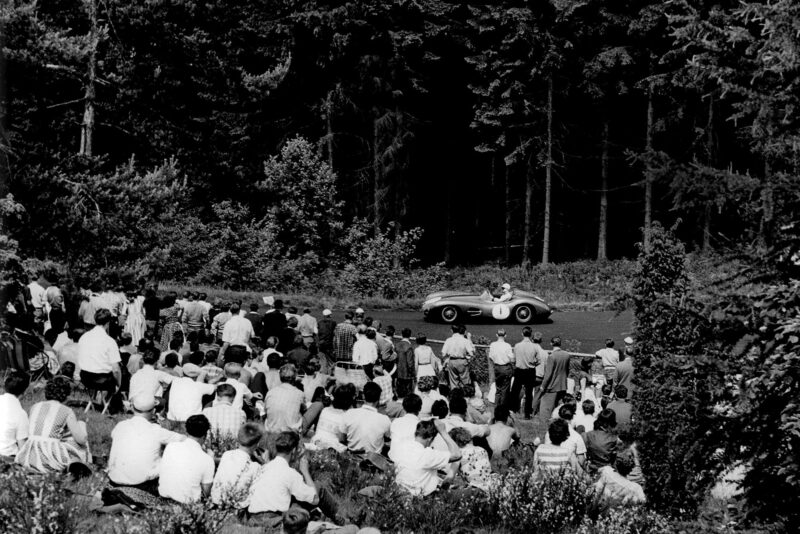
Moss enjoyed great success at the Nürburgring 1000Kms in his career, winning in ’58 and ’59 (pictured) in the DBR1
Was there a reason that so few of his countrymen made it to the top before Moss? If so, it was because sometime between the derring-do of the wealthy amateurs, who hadn’t expected to survive World War I and came to epitomise 1920s Bentley Boy spirit, and the arrival of Moss, shortly after World War II, the world changed and they appear not to have noticed. Instead, we came to rely on lone wolves who eschewed competition for something they considered purer by far – speed itself; and we should thank Messrs Campbell, Eyston and Cobb for their contribution, for without them the roll call of great British drivers from the 1930s would have been thin indeed. But then came Moss.
It is no exaggeration to say Stirling Moss put Britain on the motor racing map, and not just because of the size and brightness of his supernova talent. He also came with his manager, the inestimable Ken Gregory, when he was just 24. He liked a party, stayed up to the small hours and had a keen eye for the ladies, but while others might turn up for a test late, hungover, or not at all, Moss was far too focused on his craft.
And doubtless, some thought less of him for it, as if you were not quite the complete 1950s racing driver unless you could also be relied upon to get shambolically drunk when the occasion presented itself. Stirling never did. Instead, he competed. Whatever he could, wherever he could, from rally and saloon cars to sports cars, 500s and formula cars. He raced from Nassau in the Bahamas to Invercargill in the south of New Zealand, not because he loved the money for its own sake, but because he loved the racing the money provided.
Cast your mind back to 1959. Aston Martin’s DBR1 prototype had already raced at Le Mans three times and three times it had failed to win, so team manager John Wyer elected to miss the entire season just to focus on that one race. Except that Stirling wanted to do the Nürburgring 1000Kms because he’d won it on two of the previous three occasions and was sure the DBR1 still had a chance. So he asked Wyer if he would send the spare DBR1, who declined on the grounds it was two weeks before Le Mans and nothing should be allowed to get in the way of preparations. Wyer only relented when Stirling offered to pay all the expenses himself. Good thing he did: Moss not only won at the ’Ring but Aston combined it with victory in France a fortnight later. Aston found itself in with a chance of winning a championship it had never intended to enter, which it duly did – also almost entirely thanks to Moss – at Goodwood in September. So you can say with some conviction that without the determination of Moss, and his willingness to put his hand in his pocket for the pure love of racing, Aston Martin would never have won the World Sportscar Championship, comfortably its greatest achievement in racing to date.
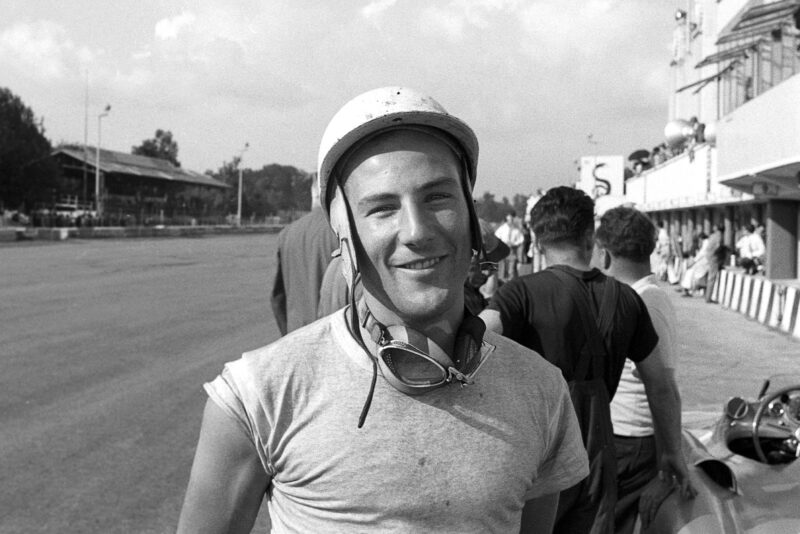
Moss earned his Mercedes chance for the 1955 F1 season, and had no issues playing support to leading driver Fangio when the need arose
Stirling also demanded the best from his machinery and would not think twice about playing the number one card to get it, sometimes to the chagrin of team-mates who’d not have minded the latest development being fitted to their car first. But Stirling’s argument was as simple as it was irrefutable: if you want to win, give the quickest car to the quickest driver. And they always did.
And yet even here contradictions abound, for Stirling was nothing if not a team player. When he was with the best – unquestionably during the 1955 season at Mercedes-Benz – he followed Fangio not just loyally, but happily too. And even when he was the undisputed best driver in the world, in that period after Fangio retired and before his 1962 Goodwood accident, he’d do what the team required of him, as another quick rewind to 1959 shows.
Le Mans that year was Stirling’s ninth on the trot from which he had managed to extract no more than two second places and a string of retirements. Though he never liked the race, by then he must have been itching to win it. But when the time came to decide the race strategy, it became clear that a sacrificial lamb would be required. Aston Martin had three cars entered, and Wyer’s notes describe the one allocated to Moss and Jack Fairman as ‘semi-expendable’. Indeed, and for very good reason. Moss was sent out with specific instructions to go flat out to break the Ferrari challenge. To this end, the team had even fitted the Moss DBR1 with an engine with a four bearing crank while the engines of the other two had seven apiece. This meant it was more powerful (to the tune of 255bhp versus 240bhp) but weaker. Stirling duly led for the first hour going at a cracking pace, forcing the Ferraris to go faster than they cared. The rest is history: Moss retired, but so did the works Ferraris, leaving his team-mates with their stronger engines and more relaxed pace to come first and second. As Wyer said at the time, ‘It is impossible to over-estimate the part played by Moss in our success at Le Mans.’
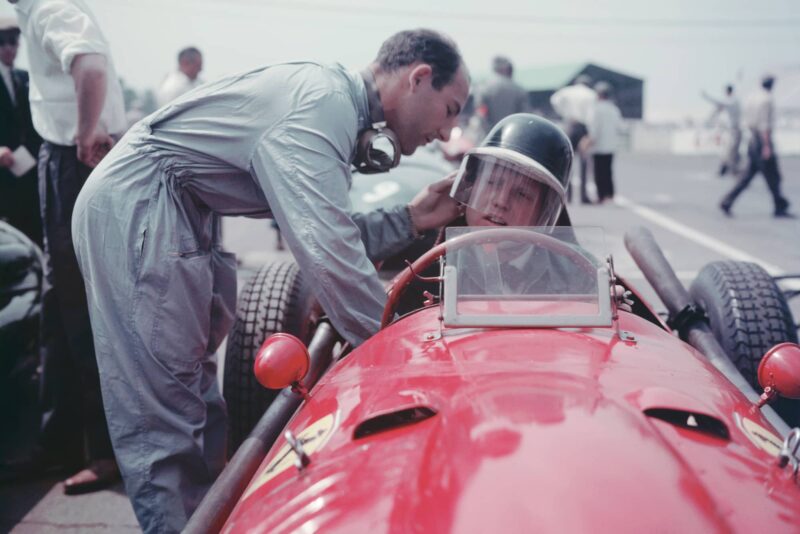
Moss has some advice for Ferrari’s Hawthorn in 1958, who would go on to win the title that year
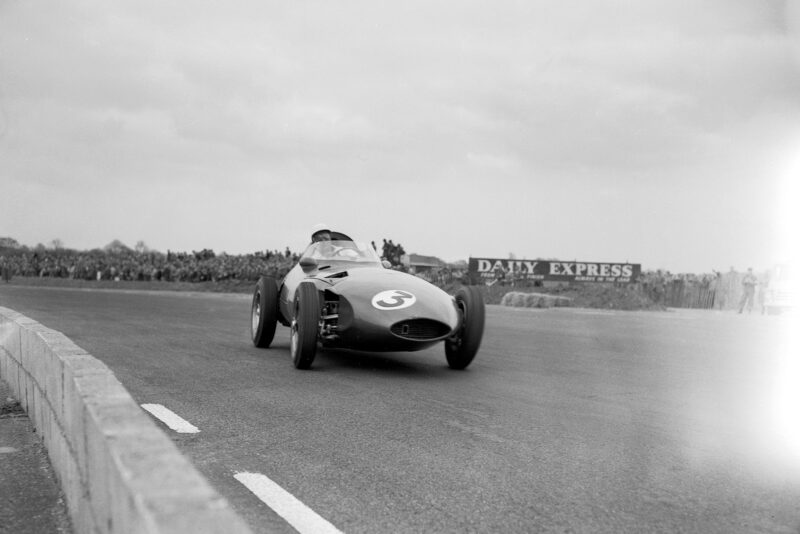
Vanwall’s Moss on his way to victory in the 1956 International Trophy at Silverstone
Why, then, did he never win the World Championship? There are two reasons, save bad luck, both highly illustrative of the Moss character and its at times iconoclastic nature. Most famously, he chose to race for teams he liked first, and those likely to bring him the best results second. For instance, for years he point-blank refused to race for Ferrari because The Old Man had once led him up the garden path, and when Stirling finally relented, it was only on the condition that Ferrari supplied works cars to Rob Walker and that they ran in Rob’s colours. Such a move would have been unimaginable for any other driver. That was the power Moss possessed. Remember too that when Lotus and Cooper enjoyed their first- ever World Championship victories, on both occasions it was a private car that beat the factory teams – a private car entered by Rob Walker Racing and driven by Stirling Moss. Given that by then Moss could have driven for anyone he damn well chose, the fact he elected to stay with Rob to the end of his career speaks volumes for the character of the man, not to say the number of World Championships the world’s best driver didn’t win as a result.
But there’s something else, too. When at the 1958 Portuguese Grand Prix Moss spoke up in defence of rival Mike Hawthorn, who’d been excluded for reversing up the track after a spin, he must have known he was dealing a potentially fatal blow to his championship chances. With just two races to go, Hawthorn was his closest rival for the title. But on the contrary, said Stirling at his appeal, when Mike reversed he was not on the track at all, but the pavement… Hawthorn gained six extra points that day to add to the one he’d scored for fastest lap. At the season’s end, Moss trailed Hawthorn by a single point and even if they’d tied, Stirling, with four wins compared to Hawthorn’s one, would have been champion.
The first time I saw Moss at close quarters was some time in the early 1990s when I had been sent to chase the Mille Miglia retrospective. Stirling was driving his old Mercedes-Benz 300SLR and I elected to try and stay with him in a brand new Porsche. And I succeeded, for at least 10 seconds. But then with a braaap from the Merc’s desmodromic valve gear, a wrench of the wheel and a level of commitment I’ve only seen Walter Röhrl exhibit on the public road, Moss was gone. The second time was in the lunch queue later that day, whose length was not to his liking, a point he was not afraid to make quite clear. He seemed impatient and arrogant, one of the better reasons never to meet your heroes you might find.
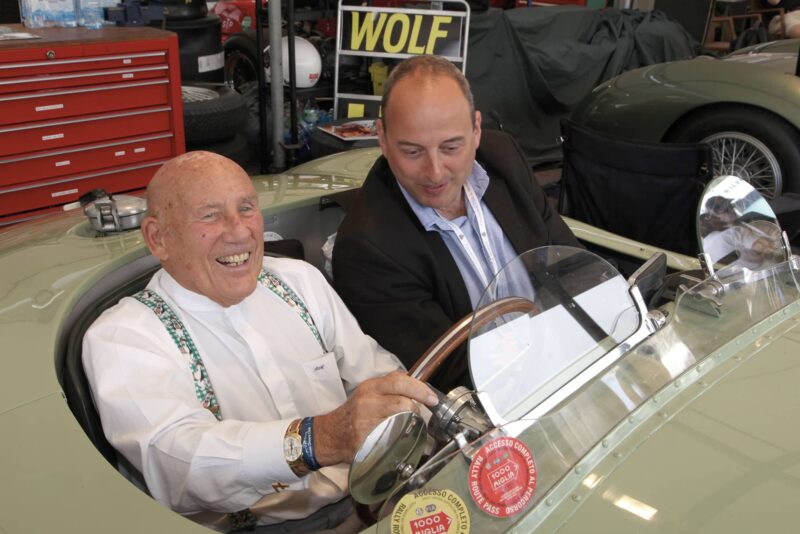
Frankel’s recollections of Stirling came from a relationship built up over more than 20 years
But then I started to work for Motor Sport and, as I touched upon at the start of this story, I saw a completely different person. But I only really got to know him personally when his biographer Robert Edwards asked me to take over a motoring column he’d been ghosting for Stirling for Orient Express magazine. It involved going over to Shepherd Street in a car we’d chosen to feature and Stirling driving it while I spoke to him about it. His driving was never less than exquisite in the countryside, never less than terrifying in town.
We’d often end up at IKEA in Brent Cross because there was some item of furniture he needed for one of the properties he rented out. Just to watch him shop told you so much about him. He parked in the collection bays, marched in, grabbed a tape measure and hung it around his neck, went straight to the front of any queue, collected his goods and left.
And once, while we were on our way, I got a call from my daughter’s nursery saying she had a foreign object lodged up her nose. So I’m many miles away, being driven by Stirling Moss in a Maserati of some description, travelling in completely the wrong direction and I need to tell arguably the world’s greatest driver we need to turn around and drive into London so I can retrieve a shard of coconut from my three-year-old’s hooter. Yes, really. But I never have to ask because Stirling has heard all, understood all and is already around a roundabout and heading back into town.
That is the Stirling Moss I will remember. I don’t care how fast you can drive around in circles if it turns out you’re a bit of an arse.
I remember another racing driver whom I spent a little time with before I’d met Stirling. I’d been scared of meeting him because of his reputation, and his offish approach to journalists. But when we were alone and driving around a wet Silverstone what I remember, far more than his other-worldly car control, was the complete character transformation. Warm, chatty and fun, that day I saw a side to Ayrton Senna I never knew existed. I’ve seen it in Sébastien Loeb and I saw the same in Moss.
So I hope if I’ve achieved anything over these pages, it’s to show that there was more to Stirling than Mr Motor Racing. His skills were superhuman, but they had been granted to a man who was human, and all the better for it.
One more tale, a nothing moment in his life, but which is perhaps as revealing of the real Stirling Moss as any other, and the character of a man who won over 40 per cent of the over 500 races he started and was on the podium in almost two thirds. Yet even when he was one of the most famous men alive, he still felt no need to remove his name from the telephone directory. We’d both been in the same race and because I’d had the quicker car, we had something of a dice for a few of the happiest laps I’ll ever do. He came to find me afterwards but I was elsewhere. So he just sat on some tyres and chatted happily to the fairly dumbstruck mechanic who’d prepared my car instead.
I’ve only ever had two real heroes: one was Senna, the other Moss. And while I met one once, for more than 20 years I got to know the other well. And if there was only one image of him I could take forward, it’s not Stirling behind the wheel with his classic straight-armed style decimating the opposition yet again, but Stirling in his Mickey Mouse braces in the Café de Paris, shaking with laughter. A great driver for sure, but a very great man too.

